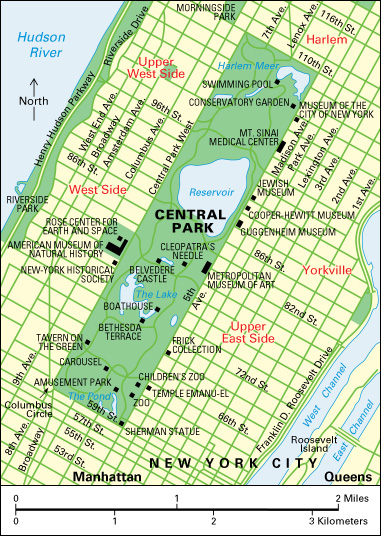Olmsted, Frederick Law (1822-1903), was an American landscape architect, city planner, and writer on social issues. Olmsted’s career was shaped by his idea of a civilized society. Through his landscape designs and writings, he tried to recast the form of America’s cities and suburbs, and to promote the refinement and culture he thought the citizens of a republic could attain. He criticized the slaveholding South because he believed the region lacked the social and cultural institutions that would raise the level of civilization there.
In 1858, Olmsted and English architect Calvert Vaux submitted a plan for New York City’s Central Park, America’s first great urban park. Olmsted then supervised its construction and modified its design to give the park its most distinctive features. These include the separation of all forms of traffic and the sweeping natural scenery that would provide New Yorkers with an alternative to the sights and sounds of the city. After 1872, Olmsted and various partners designed Belle Isle Park in Detroit, Mount Royal Park in Montreal, and Roger Williams Park in Providence, Rhode Island. Olmsted planned park systems for Seattle; Boston; Atlanta, Georgia; New York City; and Louisville, Kentucky.

In addition, Olmsted planned suburban developments, colleges, and the grounds for many institutions and public buildings. His most notable designs include the grounds of the U.S. Capitol in Washington, D.C. (1874), the layout for the World’s Columbian Exposition in Chicago (1893), and the New York State Reservation at Niagara (1879). Olmsted also designed such communities as Riverside, Illinois; and Parkside, in Buffalo, New York.
Olmsted was born on April 26, 1822, in Hartford, Connecticut. He died on Aug. 28, 1903. His son Frederick Law Olmsted, Jr., was also a well-known landscape architect and city planner.
